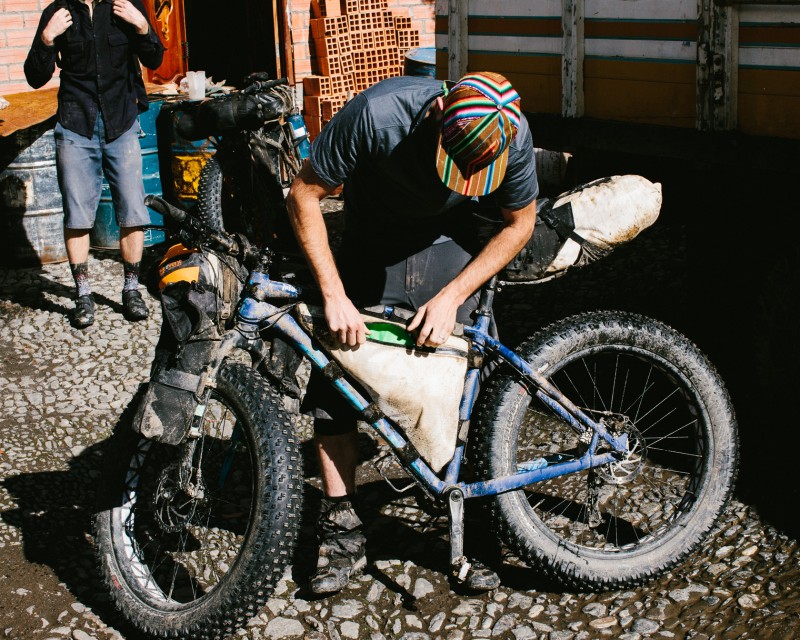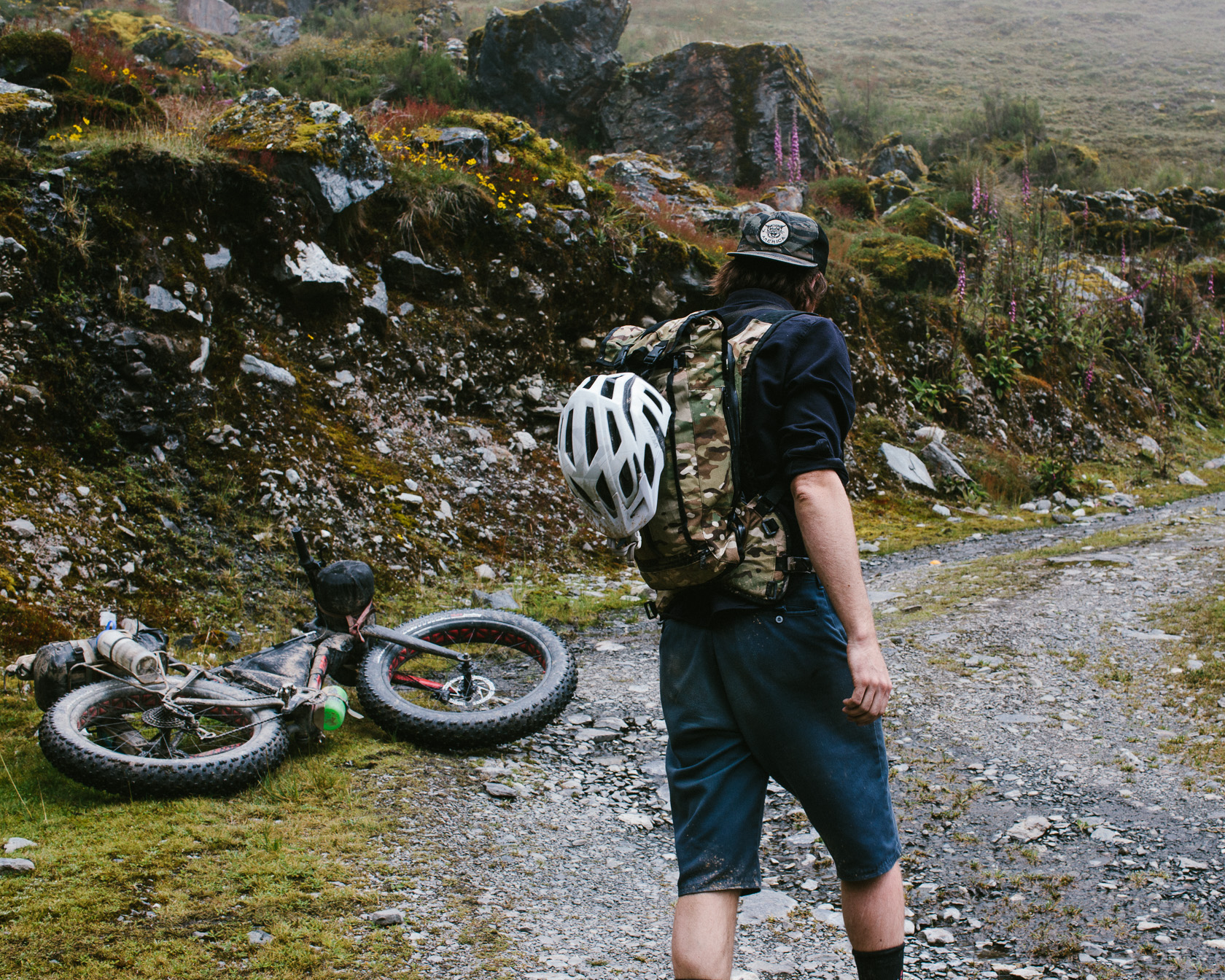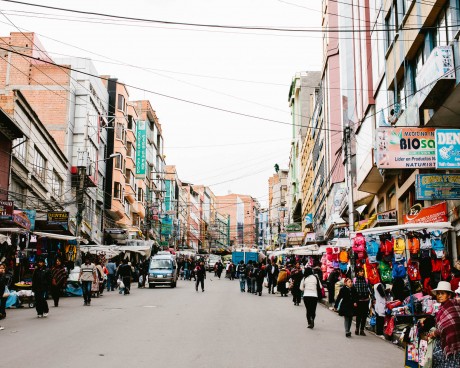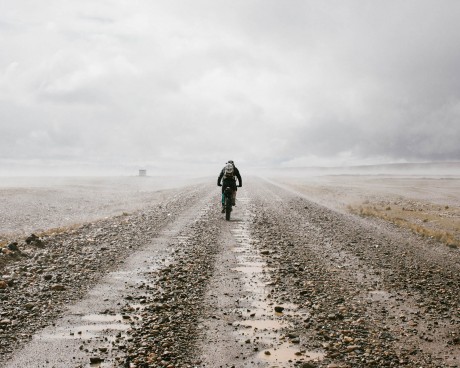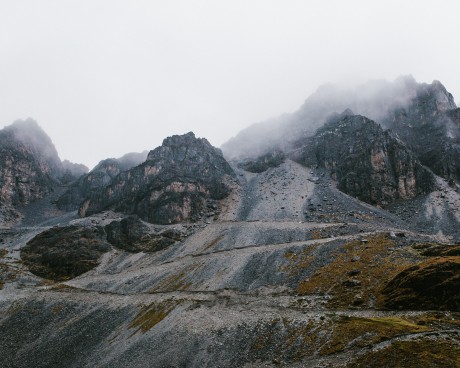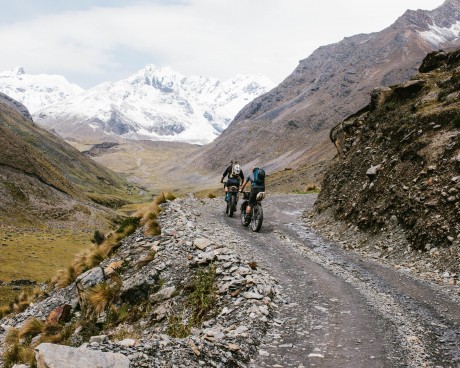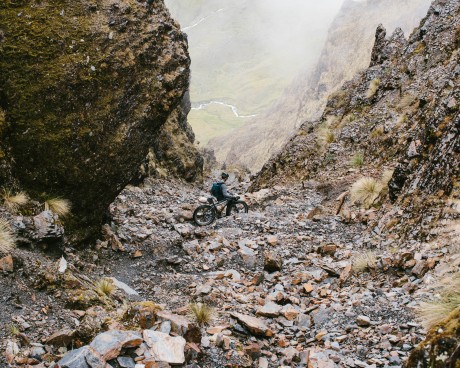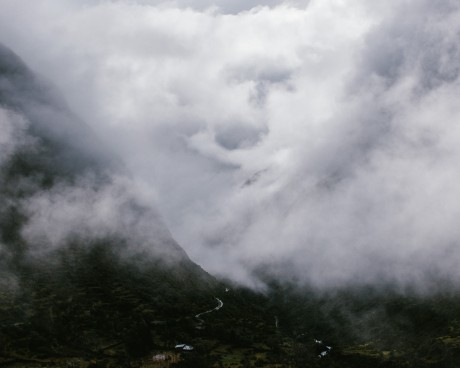
Sunchuli Pass: Day Three
SECTION No1
A Crossroads in the Clouds The Inevitability of Wrong Turns
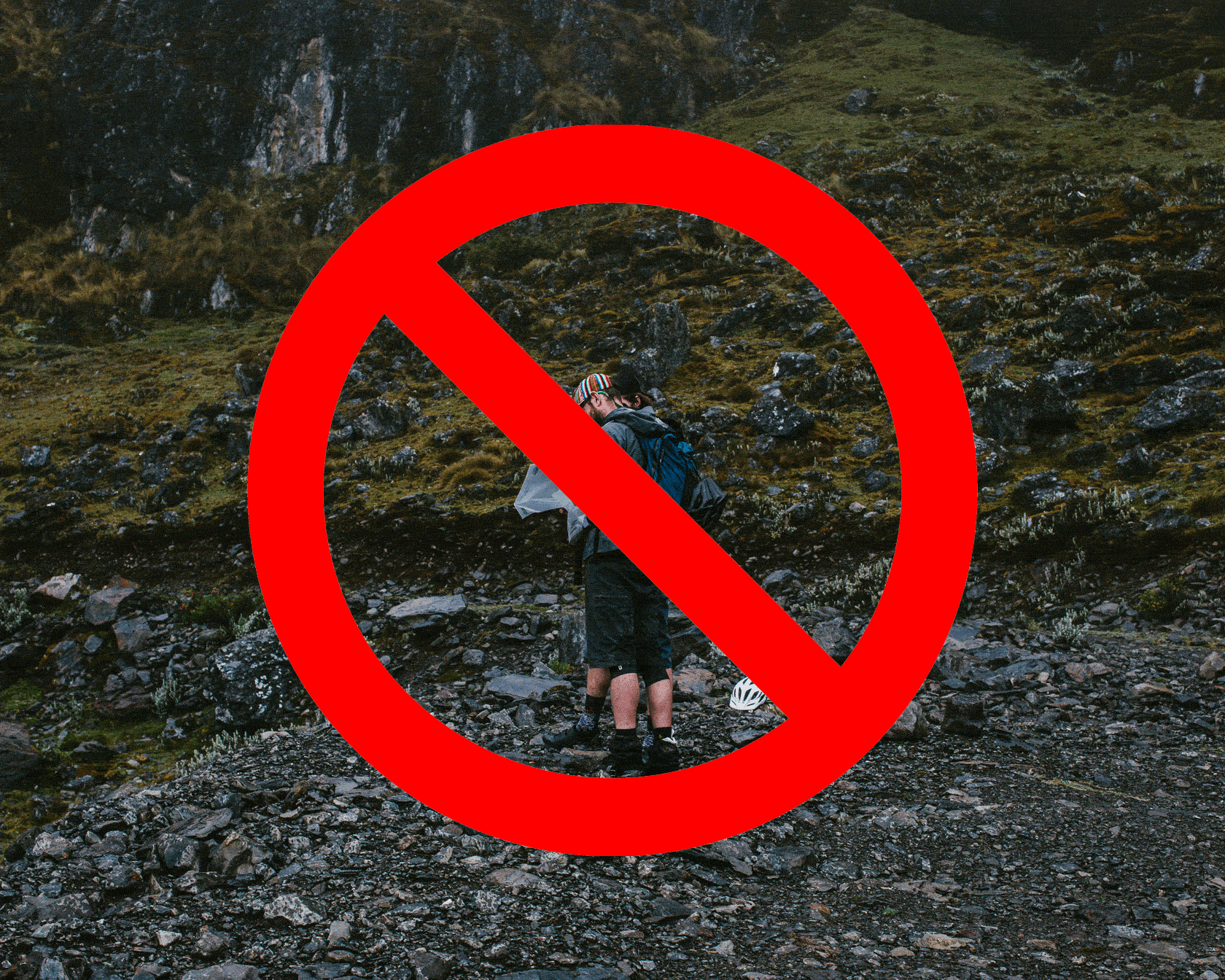
This is a situation that I am sure you have faced yourself, it is a common element to many adventures, excursions, and family road trips. The wrong turn. This is a plot device that has motivated the action of drama, adventure, and horror stories since time forgotten. Ancient Greeks, Sumerians and Mesopotamians were not immune to the wrong turn, and neither were the likes of Clark W. Griswald or Bugs Bunny and the infamous Albuquerque. Whether appearing as historical fact or contemporary fiction, the wrong turn plays a crucial role, its consequences opening up so many unexpected possibilities for folly and a redemption. It would have been unthinkable for our crew to think that our Bolivian excursion would be immune from such a formidable and entrenched narrative device. There was no precedent for our trip, our maps were more than 40 years old, and it quickly became apparent that since they had been drawn many new roads and paths had been constructed. There was maybe a tacit acceptance in the group of an outside possibility that we would, at some point, follow an incorrect path or choose the wrong direction, but the consequences of such a mistake had extremely high potential for disaster—as in true disaster, as in emotional, physical, and mortal disaster—that we chose to not take it seriously, choosing to instead to rely on luck, less than accurate maps, and the scattered bits of trash on the side of the road to help guide us to the town of Curva, our end point.
It is important to note that trash is omnipresent in Bolivia.”- KVH;The country is one of the poorest in the western hemisphere and lacks many of the modern conveniences that you and I take for granted, trash removal being one of them. In the small campamentos of the Altiplano and the Cordillera Apolobambas refuse is omnipresent, scattered like mundane confetti. The idea of “pack out what you pack in” that has been ingrained into our outdoor psyche since childhood is also dependent on a plurality of luxuries that make up our culture, luxuries that have yet to affect the lives of your average Bolivian. To have the energy and the time to pack out your trash is a luxury of convenience, of surplus energy, of public services, and of health. This is not a condemnation, simply an observation worth noting because trash, throughout our adventure, would act as a type of breadcrumb trail. Once out of town wrappers and bottles littered the side of the roads and trails; the higher the frequency of travel the higher the frequency of litter. This was the flotsam and jetsam of travelers past.
ADDITIONAL SUPPORT PROVIDED BY SRAM
SRAM
So this is where we found ourselves, at a crossroads, high above Pelechuco. We had spent that previous half day riding, pushing, and panting our way up the side of the mountain. On our map there was one route, one path, and we were not expecting to have to make a decision. But here it was. James and I argued about which path to take, poring over the vague shapes on the map to determine which route would take us over the correct pass and into Hilo Hilo. I say vague because the maps we were using were zoomed-in color photocopies of screenshots from Google Earth and the original images were of such a low resolution that staring at them felt like you were looking through goggles smudged with grease. Specifics were not forthcoming, details were scarce. We would need to rely on circumstantial evidence, living up to our project’s namesake, we would need to do some Dead Reckoning. What we knew: the road going to the left was steeper and appeared older with washout and rock fall covering its path, while the road to the right appeared to have been recently constructed or plowed. Yonder Journal’s previous trip experience told us that you take the older, steeper, more damaged road because these trips aren’t supposed to be easy. Up the steep winding switchbacks of the road on the left we went, following what looked to be recently churned tire tracks, past a few hanging valleys, and through a pile of rocks shaped like a wall that lined the saddle of what appeared to be a pass. We rejoiced, had a snack, used the restroom, and then followed the trail down the backside. We are on a new road, we are flying, and boy do these Fatboys get moving when you head down hill.
We smash switchback after switchback, quickly losing altitude, then suddenly, it stops. The road ends.”- KVH;
There are three men and a rugged SUV in front of us. We have been descending for 15 minutes. It is drizzling, and the man closest to use is wearing sandals while he rolls one basketball sized boulder after another off the road. He stares at us for a moment, giving us a wide, tooth-poor smile before getting back to work. From behind him steps a man wearing track suit pants and a few thin gold chains around his neck; he is obviously the foreman. We ask him in our awful broken Spanish, “Is this is the road to Hilo Hilo?” “No,” he says, “this road turns into a trail that dead ends another mile down the hill.” He is annoyed by our presence, we are annoyed by our presence. We ask him if he is sure. He doesn’t answer, but gives us a looks that says, “I don’t give a shit what you think, I just don’t want you around me.” His vehicle is stuck. It is getting late. The situation is miserable. We turn around. That 15 minutes of blissful descending takes us three hours to climb and by the time we reach the crossroads it is twilight and the drizzle has turned to a downpour. We have two options: ride all the way back down the hill to Pelechuco, losing all of our day’s work and risking a detrimental blow to our overall trip motivation or bivouac here on the mountain, saving the work we put in on the climb but facing another night of sleeplessness at elevation. We settle for the latter and strike camp in the indigo blue light of the coming night.
SECTION No2
Pelechuco 11,787 ft.
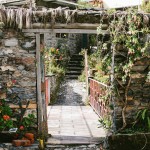
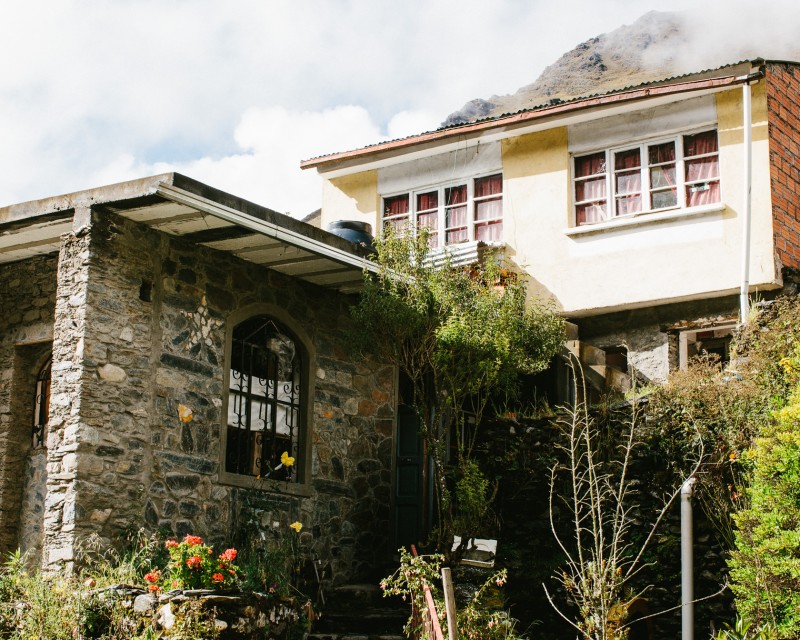
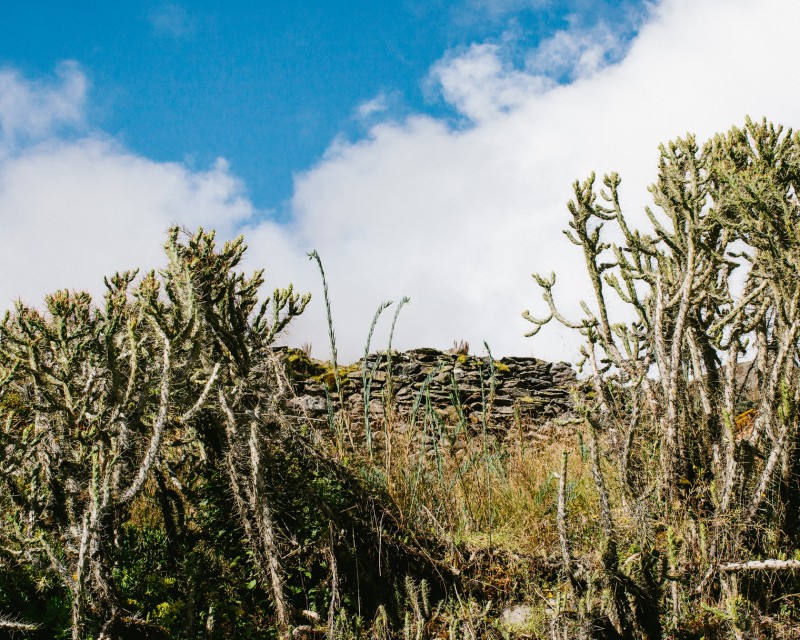
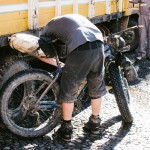
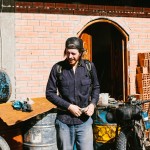
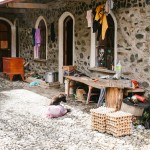
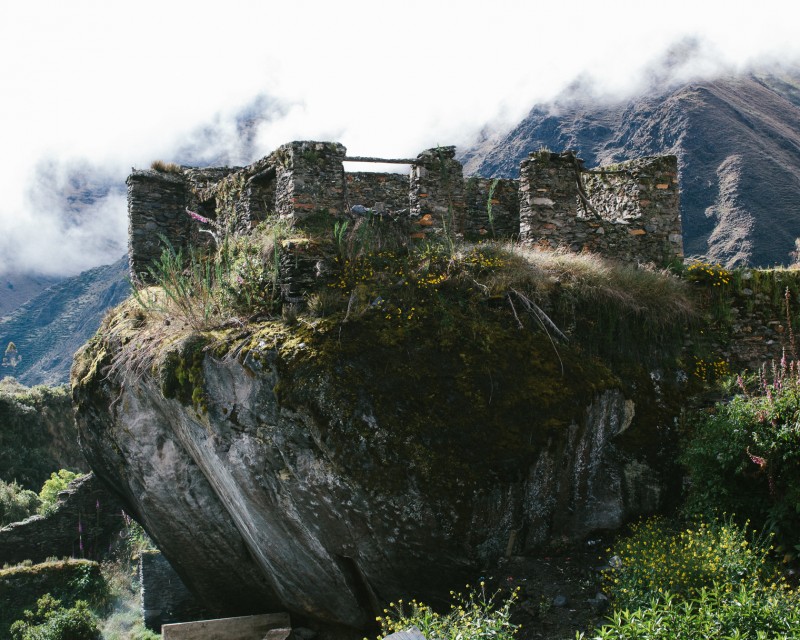
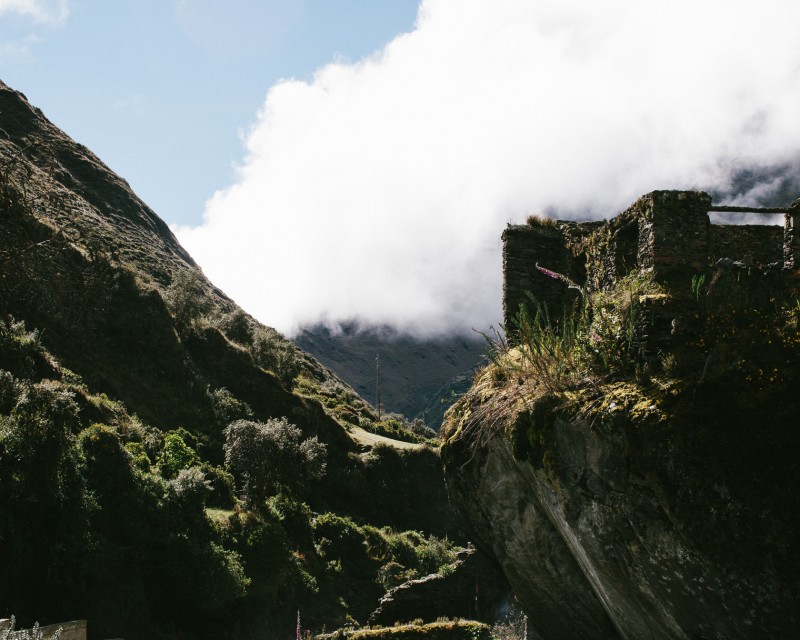
SECTION No3
Climbing to Pelechuco Pass 15,000 ft. +
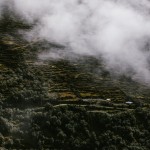
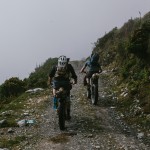
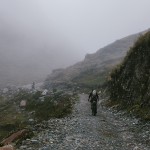
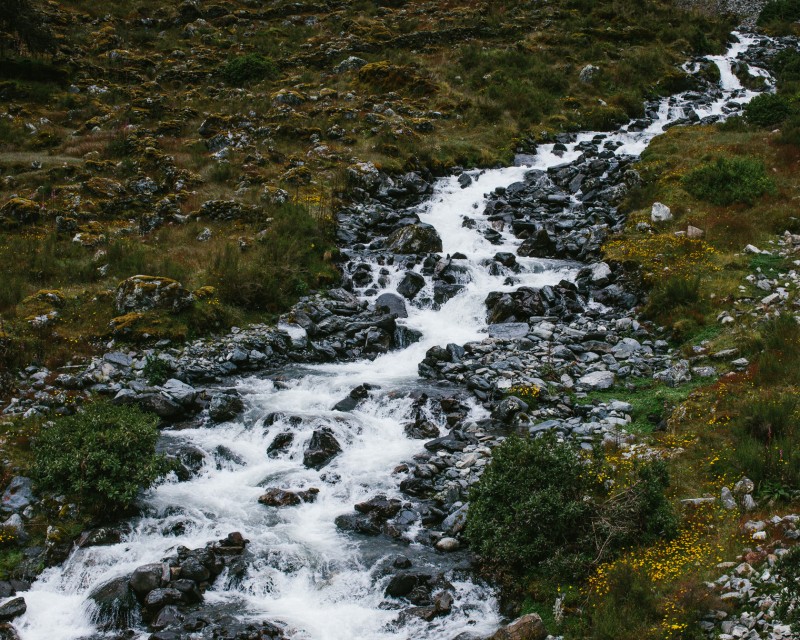
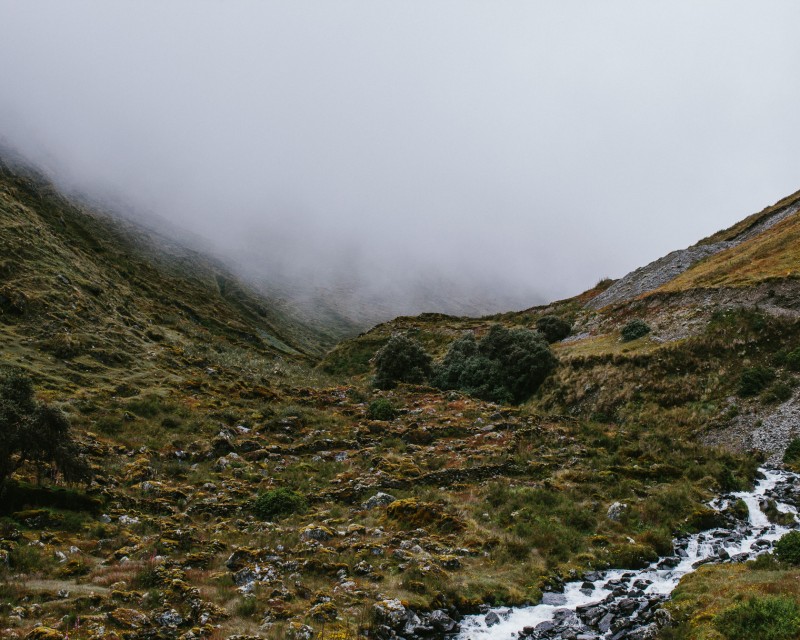
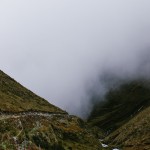
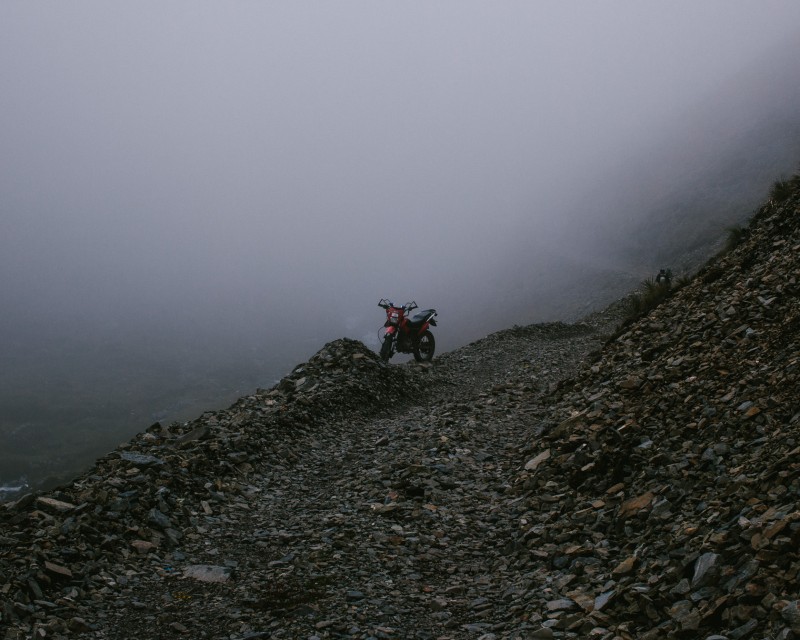
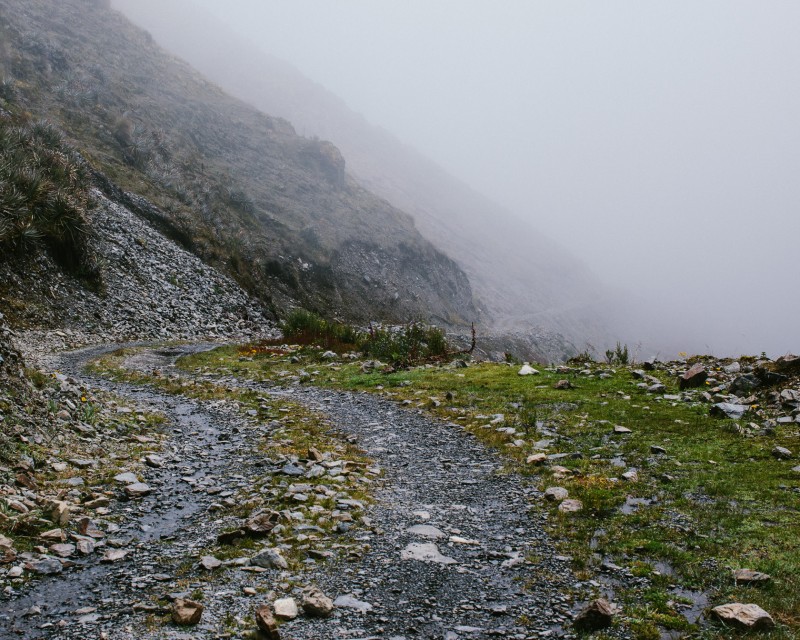
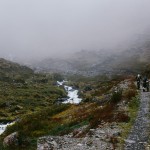
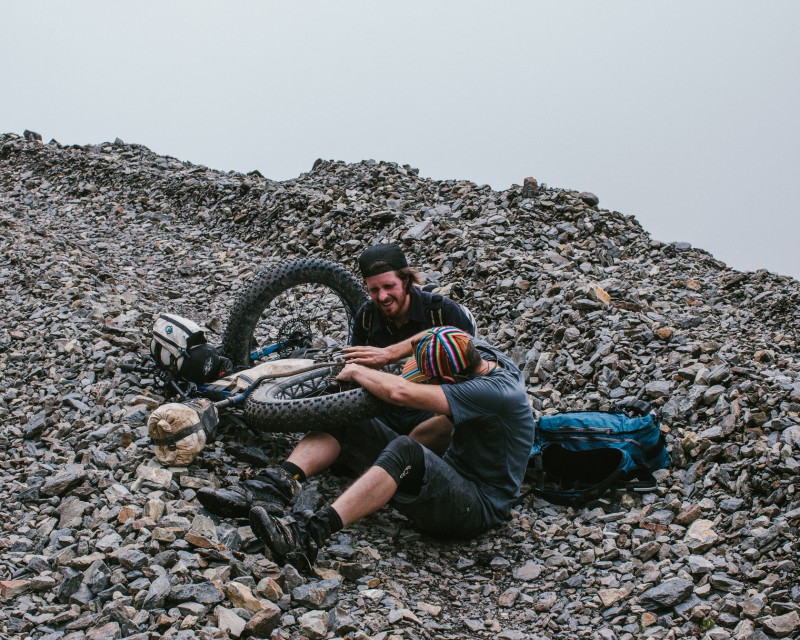
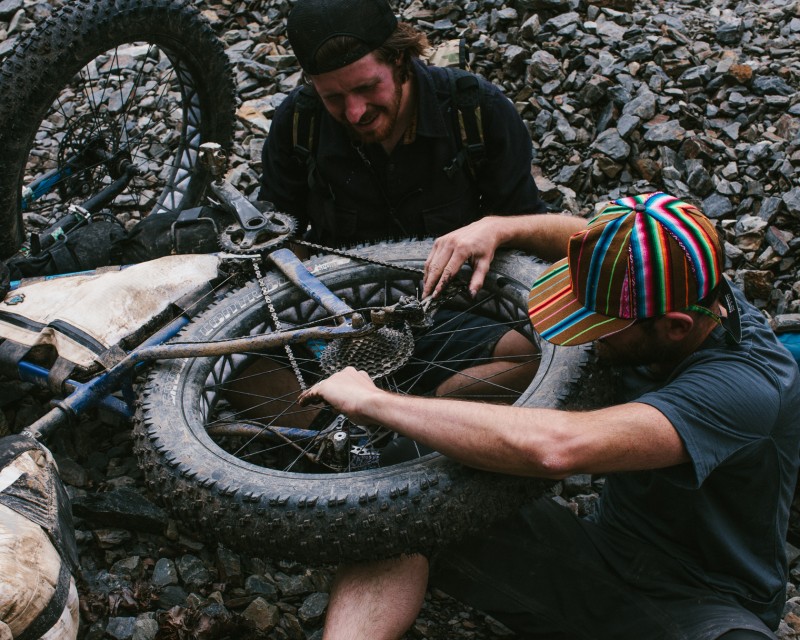
SECTION No4
Hot Lunch 13,665 ft.
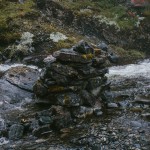
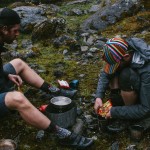
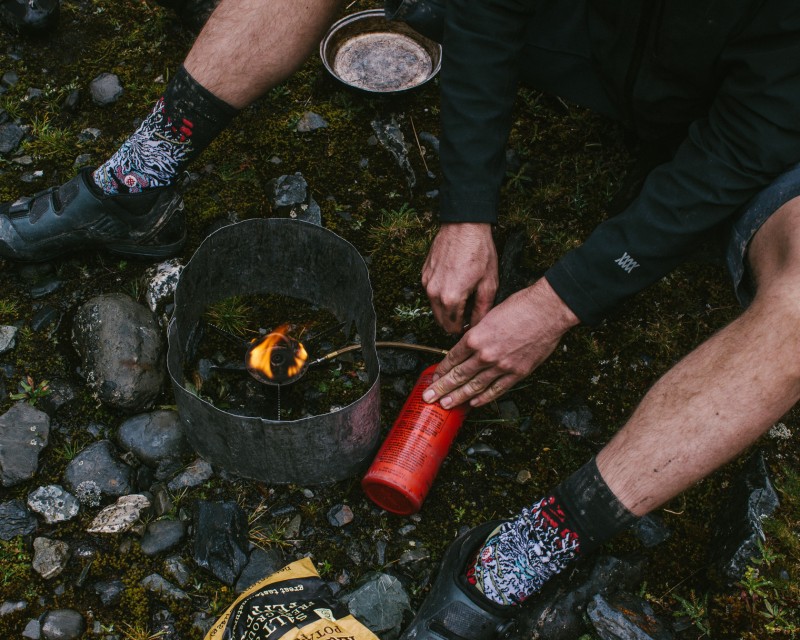
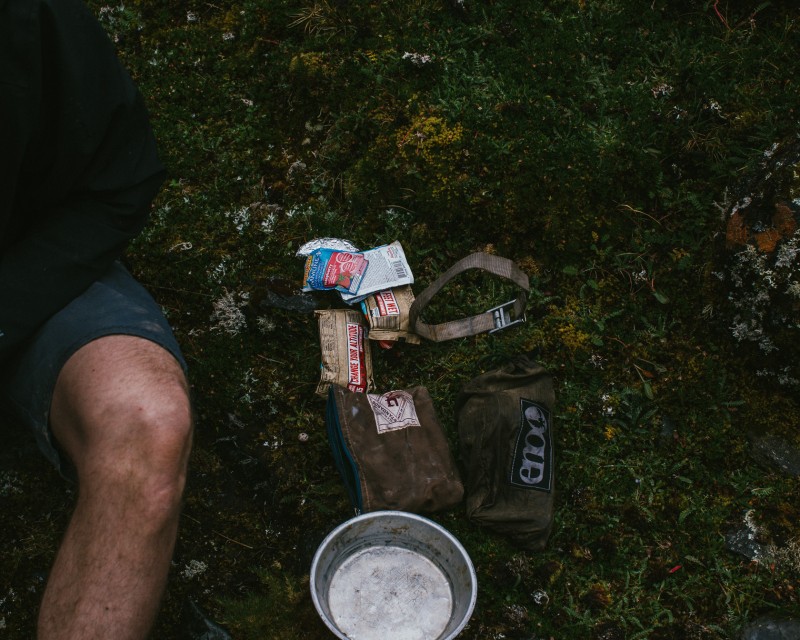
SECTION No5
Wrong Turn 14,256 ft.
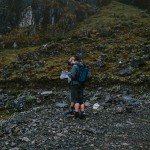
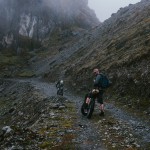
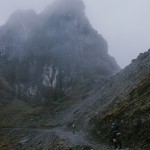
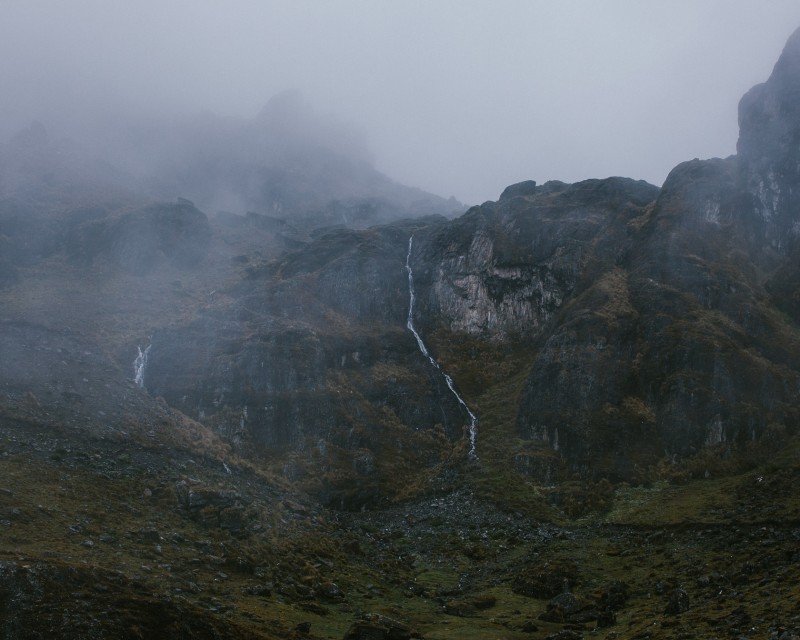
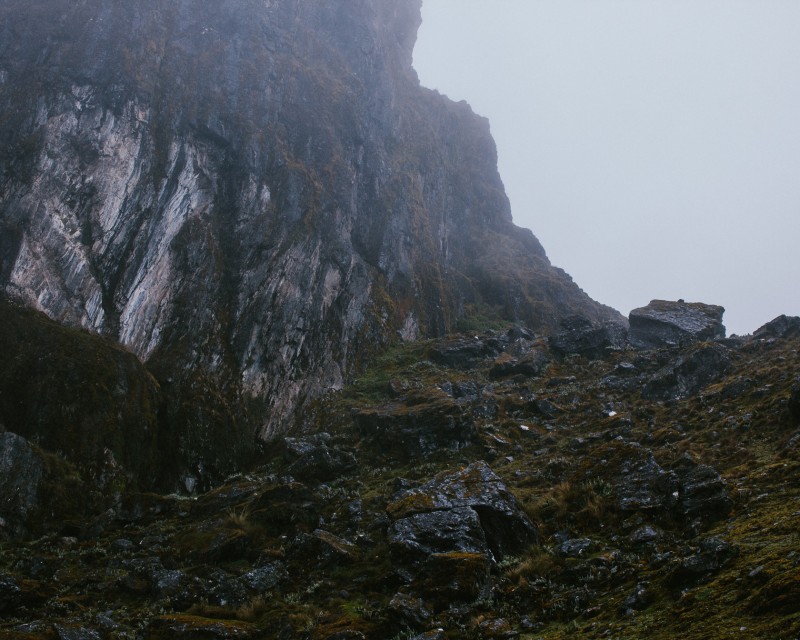
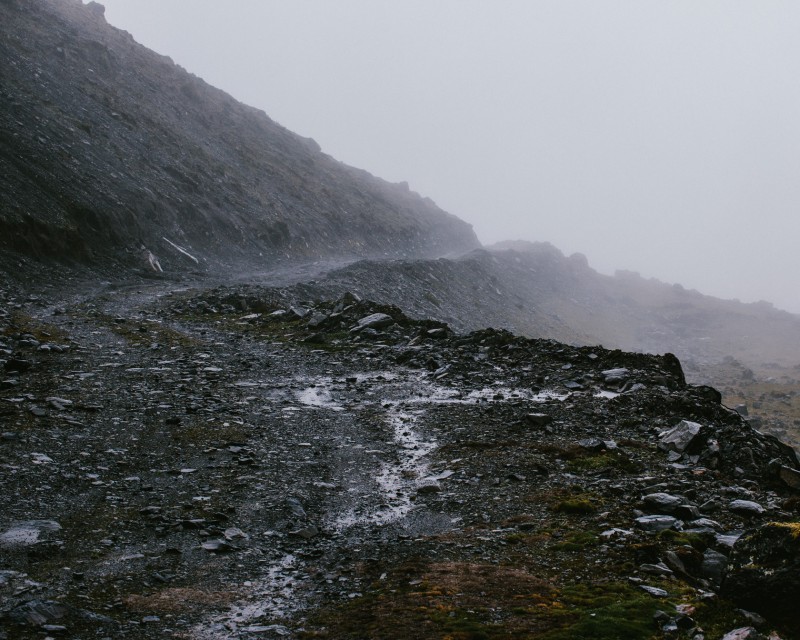
SECTION No6
Mountainside Bivouac #1 14,314 ft.
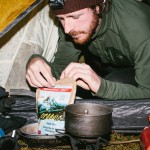
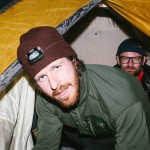
DILLON MAXWELL EARNED A BA IN HISTORY FROM COLORADO STATE UNIVERSITY. HE WROTE HIS THESIS ON THE SPANISH CIVIL WAR'S EFFECTS ON THE CUBAN REVOLUTION AND DID HISTORICAL FIELDWORK IN SOUTHERN COLORADO FOCUSING ON FAMED AMERICAN EXPLORER ZEBULON PIKE AND THE ENVIRONMENT PIKE ENCOUNTERED IN HIS TRAVELS. DILLON LIVES IN FORT COLLINS, COLORADO WHERE HE SPENDS HIS TIME RIDING BIKES, CAMPING, RIFFIN', AND PLAYING DRUMS. Brief Histories: Pishtaco - by Dillon Maxwell
Every culture contains a folk villain. An antagonist, an entity of evil, something to fear, some kind of Boogeyman to keep people up at night. In the Andes, a demon-like figured dubbed Pishtaco is that Boogeyman. The name of Pishtaco comes from a Quechua word, pishtay, which means to cut into pieces. Pishtaco is a pale, foreign figure who roams the Andes searching for victims to brutally torture, mutilate, and suck the fat from their corpse.
Pishtaco’s identity may have shifted over the time, but Pishtaco has always maintained a goal of mutilating and sucking the fat from his victims. The entity has become a reflection of colonizers and westerners by the indigenous peoples in the region. During the Colonization of Latin America, conquistadors and missionaries were seen as Pishtacos or as agents of Pishtaco. Word began to spread about how the Spanish Pishtacos would kill the indigenous peoples and use their fat to make candles for the churches, to heal wounds of conquistadors, and to shine armor. In more recent times, Pishtaco began to take on a new identity with the arrival of NGO’s, mining corporations, and outsiders visiting the region. Some saw the workers of corporations as Pishtacos. They were going to kill and take the fat of the victims to help run mining machines and airplanes. Others saw people working with NGOs, the anthropologists, geologists as agents of Pishtaco. The work they were doing when studying people, places, and cultures was really just a cover up in order to spy for Pishtaco so he could know where the most fat was. There are even accounts of workers being attacked by locals in hopes of driving the monster away from the region.

 PROJ Y Casting
PROJ Y Casting  PROJ Y WOF
PROJ Y WOF  Lunar Bikepacking
Lunar Bikepacking  Prospectus
Prospectus  The Dead Reckoning Book
The Dead Reckoning Book  starter pack
starter pack  Bikepacking 101
Bikepacking 101  Dead Reck is Dead
Dead Reck is Dead  Introduction
Introduction  Day 01
Day 01  Day 02
Day 02  Introduction
Introduction  Day 01
Day 01  Day 02
Day 02  Day 03
Day 03  Introduction
Introduction  Day 01
Day 01  Day 02
Day 02  Day 03
Day 03  Day 04
Day 04  Day 05
Day 05  Day 06
Day 06  Introduction
Introduction  Day 01
Day 01  Day 02
Day 02  Day 03
Day 03  Day 04
Day 04  Introduction
Introduction  Day 01
Day 01  Day 02
Day 02  Day 03
Day 03  Introduction
Introduction  Day 01
Day 01  Day 02
Day 02  Day 03
Day 03  Introduction
Introduction  Day 00
Day 00  Day 01
Day 01  Day 02
Day 02  Day 03
Day 03  Day 04
Day 04  Instagram Symposium
Instagram Symposium  Introduction
Introduction  Day 00
Day 00  Day 01
Day 01  Day 02
Day 02  Day 03
Day 03  Day 04
Day 04  Day 05
Day 05  Day 06
Day 06  Day 07
Day 07  Introduction
Introduction  Day 00
Day 00  Days 01-02
Days 01-02  Day 03
Day 03  Day 04
Day 04  Day 05
Day 05  Day 06
Day 06  Days 07-08
Days 07-08  Day 09
Day 09  Lord Nerd Beta
Lord Nerd Beta  Base Camp: Motel on Carroll, Dunedin
Base Camp: Motel on Carroll, Dunedin  Day 01: Dunedin to Danseys Inn
Day 01: Dunedin to Danseys Inn  Day 02: Danseys Pass to Ida Railway Hut
Day 02: Danseys Pass to Ida Railway Hut  Day 03: Ida Railway Hut to Omarama Pass
Day 03: Ida Railway Hut to Omarama Pass  Day 04: Omarama to Huxley Forks
Day 04: Omarama to Huxley Forks  Day 05: Huxely Forks to Brodrick Pass
Day 05: Huxely Forks to Brodrick Pass  Day 06: Brodrick Pass to Wanaka
Day 06: Brodrick Pass to Wanaka  Lord Nerd Beta
Lord Nerd Beta  Preface
Preface  Day 01: Charazani to Hichocollo
Day 01: Charazani to Hichocollo  Day 02: Hichocollo to Pelechuco
Day 02: Hichocollo to Pelechuco  Day 03: Pelechuco to Mountainside Bivouac #1
Day 03: Pelechuco to Mountainside Bivouac #1  Day 04: Mountainside Bivouac #1 to Hilo Hilo
Day 04: Mountainside Bivouac #1 to Hilo Hilo  Day 05: Hilo Hilo to Mountainside Bivouac #2
Day 05: Hilo Hilo to Mountainside Bivouac #2  Day 06: Mountainside Bivouac #2 to Curva
Day 06: Mountainside Bivouac #2 to Curva  Outro
Outro  Lord Nerd Beta
Lord Nerd Beta  Day 01: Oasis to Bishop
Day 01: Oasis to Bishop  Day 02: Bishop to North Lake
Day 02: Bishop to North Lake  Day 03: North Lake to Piute Pass and Back to Piute Lake
Day 03: North Lake to Piute Pass and Back to Piute Lake  Day 04: Piute Lake to Bishop
Day 04: Piute Lake to Bishop  Day 05: Mono Hot Springs
Day 05: Mono Hot Springs  Lord Nerd Beta
Lord Nerd Beta  Day 00: The Approach
Day 00: The Approach  Day 01: Tyax Lodge to Iron Pass
Day 01: Tyax Lodge to Iron Pass  Day 02: Iron Pass to Graveyard Valley
Day 02: Iron Pass to Graveyard Valley  Day 03: Graveyard Valley to Trigger Lake
Day 03: Graveyard Valley to Trigger Lake  Day 04: Trigger Lake to Tyax Lodge
Day 04: Trigger Lake to Tyax Lodge  Flooded with Feeling
Flooded with Feeling  Wilderness
Wilderness  Mike Cherney on Black Bears
Mike Cherney on Black Bears  Rope Swing
Rope Swing  Slash Piles
Slash Piles  Nylon
Nylon  Conversations with a Black Bear
Conversations with a Black Bear  US Route 93
US Route 93  Turnagain Mud Flats
Turnagain Mud Flats  Bushwhacking in British Columbia
Bushwhacking in British Columbia  Men’s Penury
Men’s Penury  Bob Dittler et. al.
Bob Dittler et. al.  Bushwhacking in the MSOJ
Bushwhacking in the MSOJ  Mike Cherney’s Knife
Mike Cherney’s Knife  Hideout, UT
Hideout, UT  Hoover Dam
Hoover Dam  Shoe Tree
Shoe Tree  Destruction
Destruction  The Siskiyou Mountain Club
The Siskiyou Mountain Club  Coral Pink Sand Dunes State Park
Coral Pink Sand Dunes State Park  EN 417 – Normes Européennes 417 – The Lindal Valve
EN 417 – Normes Européennes 417 – The Lindal Valve  Wolf Satellite
Wolf Satellite  Itchy and Scratchy
Itchy and Scratchy  Tanoak Dust
Tanoak Dust  Lake Havasu
Lake Havasu  Knife Fighting
Knife Fighting  The Comfort Inn Covenant
The Comfort Inn Covenant  The Wrong/Right Way To Experience Montauk
The Wrong/Right Way To Experience Montauk  Ohiopyle Falls
Ohiopyle Falls  Allosaurus via Lean-to
Allosaurus via Lean-to  Lyle Ruterbories, Glacier National Park Ranger
Lyle Ruterbories, Glacier National Park Ranger  Water Interface Experimentation (WIE)
Water Interface Experimentation (WIE)  OSOs & UOSOs e.g., Mt. Oberlin
OSOs & UOSOs e.g., Mt. Oberlin  Louisiana Custom Cars
Louisiana Custom Cars  Archaeologizing, Pt. II
Archaeologizing, Pt. II  Archaeologizing, Pt. I
Archaeologizing, Pt. I  Mather Point
Mather Point  Sarah Plummer Lemmon & Matt Hall
Sarah Plummer Lemmon & Matt Hall  Kangaroo Lake and Fran
Kangaroo Lake and Fran  Minor Religions of the Mt. Shasta Region
Minor Religions of the Mt. Shasta Region  The Fist Bump
The Fist Bump  The Ideal Shelter
The Ideal Shelter  Headwaters of the Sacramento River
Headwaters of the Sacramento River  Buckle Bunnies
Buckle Bunnies  DFKWA: Baldface Creek - Part I
DFKWA: Baldface Creek - Part I  Mule Deer Radio Collaring
Mule Deer Radio Collaring  The Disappearance of Everett Ruess
The Disappearance of Everett Ruess  Dall Sheep Kebabs
Dall Sheep Kebabs  The Ideal Woodsman Knife
The Ideal Woodsman Knife  DFKWA: Rough and Ready Creek - Part I
DFKWA: Rough and Ready Creek - Part I  Rowdy Water
Rowdy Water  Killing a Mountain Caribou
Killing a Mountain Caribou  Boredom, Slingshots, and Prairie Dogs
Boredom, Slingshots, and Prairie Dogs  We Would Like to Visit
We Would Like to Visit  Black Bear Ranch
Black Bear Ranch  Origins
Origins  The Heart of the Klamath
The Heart of the Klamath  Skid Town Bicycles
Skid Town Bicycles  Low Stress Management
Low Stress Management  CLUB MACHO
CLUB MACHO  Club Macho Ep. 01
Club Macho Ep. 01  Club Macho Ep. 02
Club Macho Ep. 02  Club Macho Ep. 03
Club Macho Ep. 03  Cumberland Permanent
Cumberland Permanent  Iron Goat Permanent
Iron Goat Permanent  Natchez Trace Permanent
Natchez Trace Permanent  Trail of Tears Permanent
Trail of Tears Permanent  (Dis)Enchanted Rock Permanent
(Dis)Enchanted Rock Permanent  MSOJ Permanent
MSOJ Permanent  Shorty Peak Lookout
Shorty Peak Lookout  Deer Ridge Lookout
Deer Ridge Lookout  Arid Peak Lookout
Arid Peak Lookout  Flag Point Lookout
Flag Point Lookout  Umpqua Hot Springs
Umpqua Hot Springs  Cougar Hot Springs
Cougar Hot Springs  Bagby Hot Springs
Bagby Hot Springs  Goldbug Hot Springs
Goldbug Hot Springs  Ft. Bridger Rendezvous
Ft. Bridger Rendezvous  Corndoggin’ Castle Lake
Corndoggin’ Castle Lake  Kangaroo Lake
Kangaroo Lake  The Narrows
The Narrows  Matthews Creek
Matthews Creek  Introduction
Introduction 

